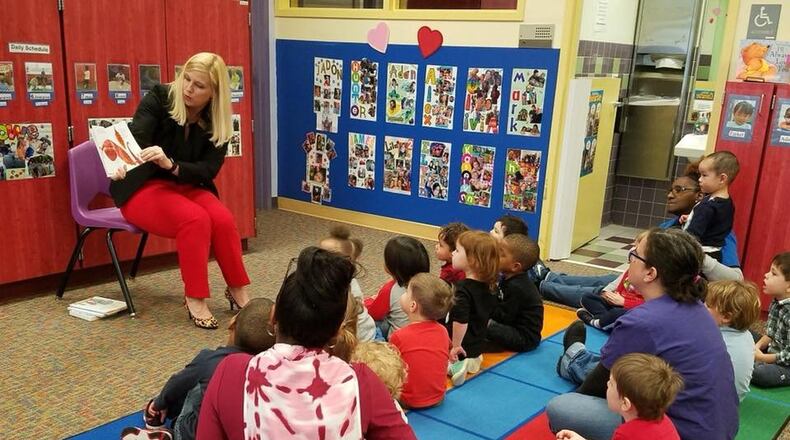One reason employers cannot find workers is that many parents lack a safe and affordable place to keep their children, but new federal funding could help solve that problem for thousands of Georgians.
Starting next month, an additional 10,000 low-income families will get help from the state to pay for child care. That’s a 20% increase over the 50,000 who get help now. Also, the state will be giving care providers more money if they provide higher quality service, which generally means paying teachers more.
Gov. Brian Kemp and Amy Jacobs, commissioner of the state Department of Early Care and Learning, announced this week that Georgia will use pandemic relief funds to expand the Childcare and Parent Services program for three years.
More families will become eligible, too. Currently, only families with incomes at 50% of the state median can participate but Georgia will raise that threshold to 85% of the median next month. Income eligibility varies by family size; for a family of four the threshold will rise to $72,124 from the current $42,426.
The lowest income families will be prioritized, as will those in 11 other groups, including households headed by minor parents, children in families experiencing domestic violence and those referred by child protective services.
The need for childcare is immense, and it has grown during the pandemic, said Mindy Binderman, executive director of the Georgia Early Education Alliance for Ready Students.
In a survey this summer, 34% responded that they or a family member had quit a job, not taken a job or made a big job change in the past year due to a lack of child care, she said. That is up from 26% in 2018.
“So we know that childcare is an issue for families who want to work and now 10,000 more kids and their families will have access to child care that will allow them to take a job,” Binderman said.
The average annual cost of child care for an infant in Georgia in 2019 was about $8,700, according to the group ChildCare Aware of America. That is nearly the cost of a year of in-state tuition at the University of Georgia. For a family with both an infant and a 4-year-old in child care, the average cost was about $15,700, the group reported.
-----
If you or someone you know has left the workforce, changed jobs or had a career affected by a shortage of quality, affordable child care during the pandemic, please email us at education@ajc.com and include a little of your story. We may contact you to arrange an interview.
-----
Early in the pandemic, there were fears that many child care centers would close as families sheltered-in-place and worked from home. Prior state help using federal subsidies have largely averted that crisis, and Georgia will be offering providers more help now, too.
The state will reward providers that have become “Quality Rated,” with payments to them rising from 10% to 55% depending upon their rating level. (The state rating is based on staff qualifications and training, curriculum, safety and other measures.)
“This expansion will allow us to serve more families while also helping more providers become Quality Rated,” Kemp said in a statement. He said child care has been a state priority throughout the pandemic given the need that first responders, essential workers and other employees have for it.
Parents can apply for the subsidy through the Department of Early Care and Learning’s “Gateway” website.
The expanded parent subsidy is temporary: it will be funded from next month through September 2024 using money from the American Rescue Plan Act.
The state will also continue picking up the tab for any associated fees or co-payments to providers until November 2022.
The basic subsidy for infant care is $139 a week, yet the service can cost $200 or more to provide, said Michele Hill, co-owner of two Kidazzle child care centers in Atlanta and two others in the metro area. For a parent living on minimum wage, especially with more than one child in care, the difference can be prohibitive. Before the pandemic, when the state was not covering it, her employees had to beg families to pay and some just couldn’t.
Hill’s centers will also benefit from the Quality Rated bonus, allowing her to pay employees more. It’s been hard to attract them, in part, she thinks, because women have left the workforce to care for their own kids amid frequent school and child care center closures.
“If we can find them, at least we can pay them a livable wage,” she said.
About the Author
Keep Reading
The Latest
Featured


